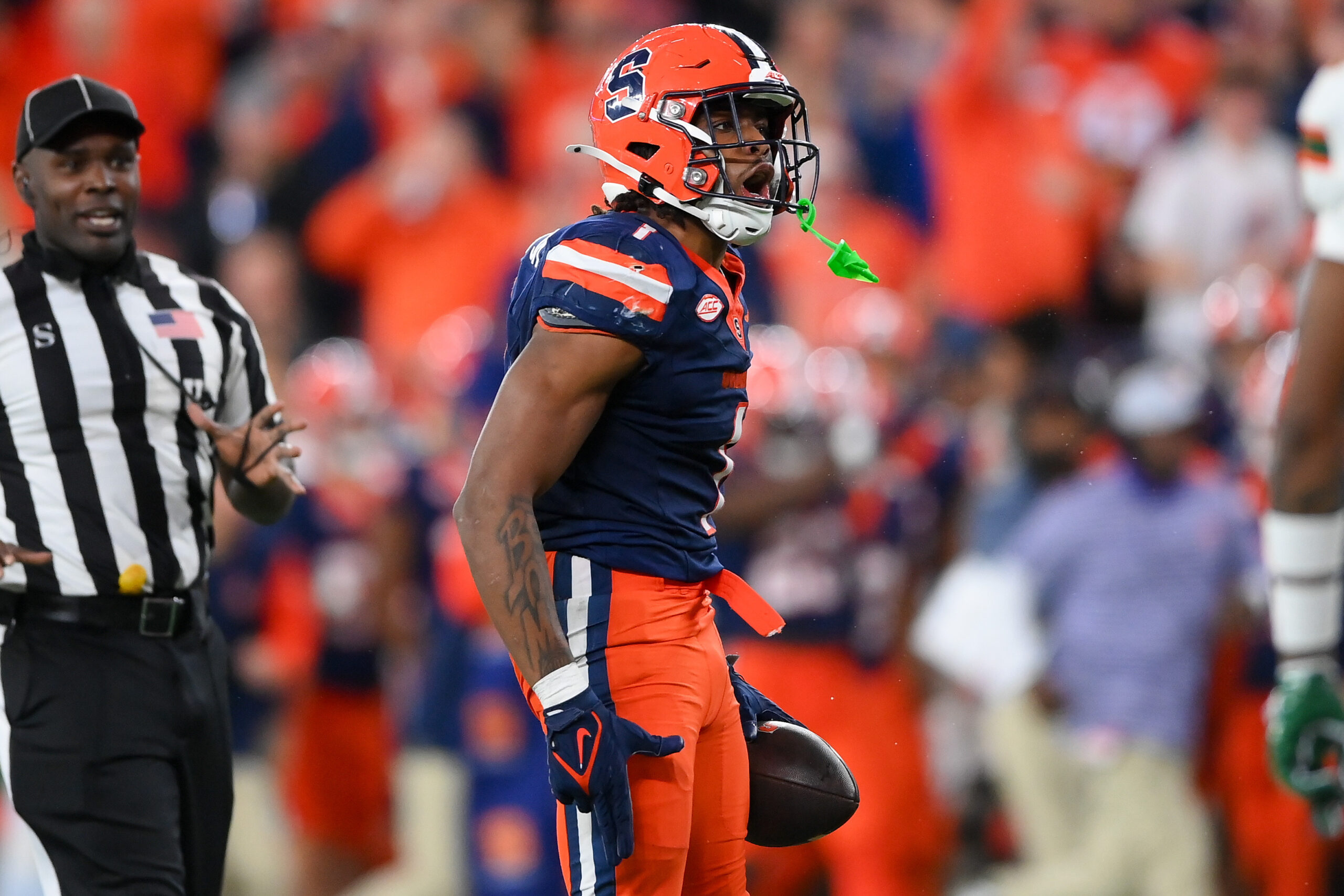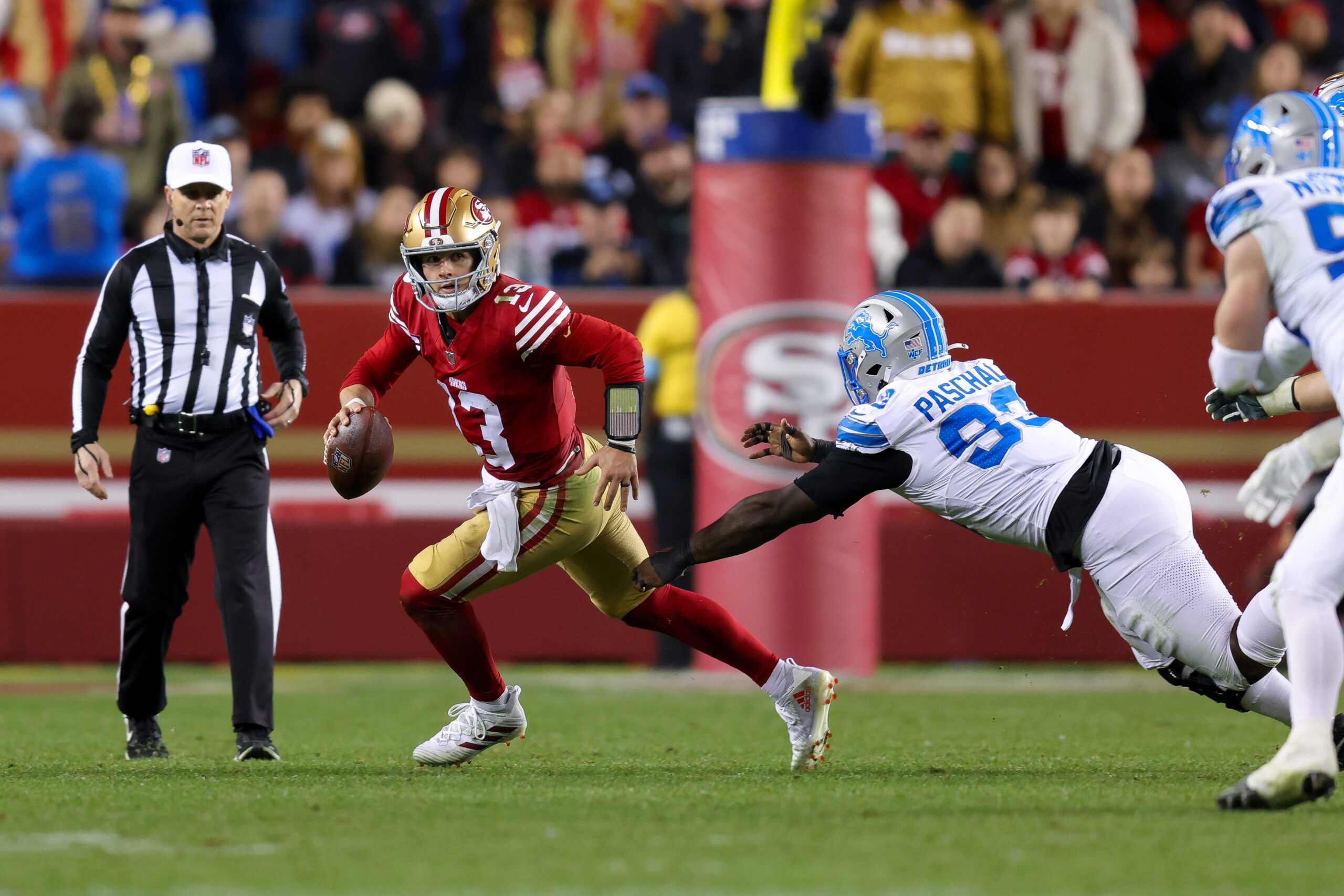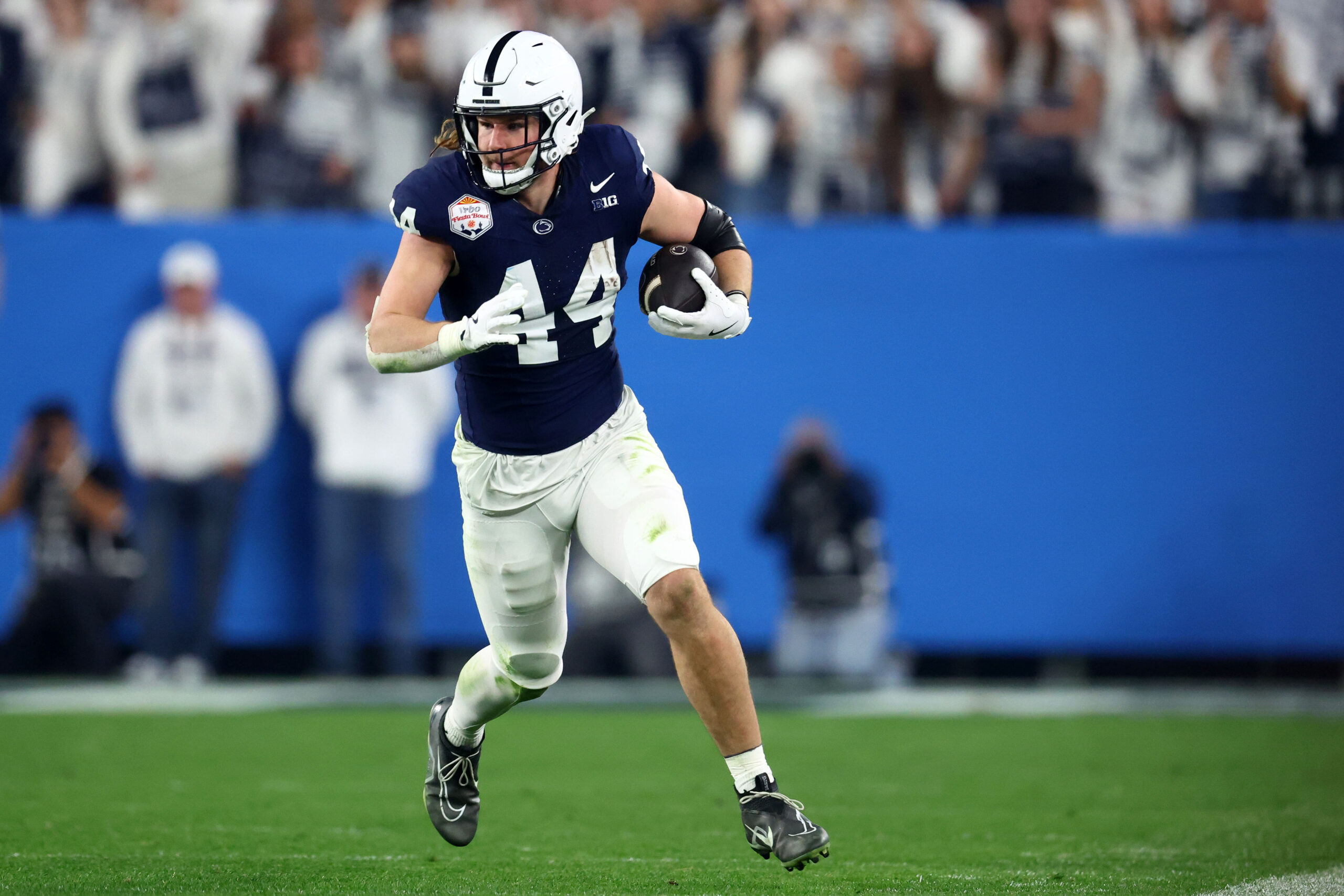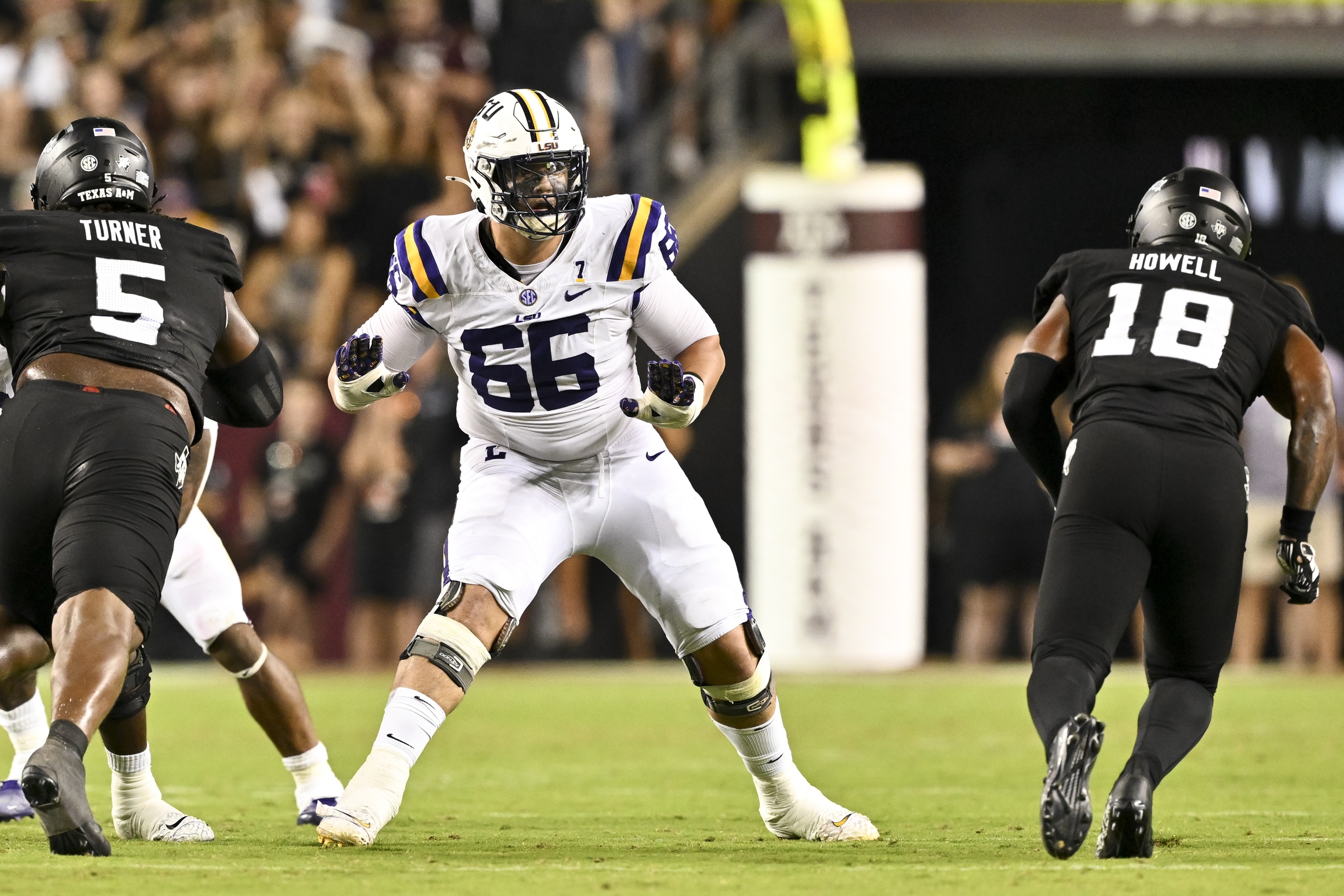Expert Analysis
11/21/24
8 min read
What Happened To The Washington Commanders' Offense?
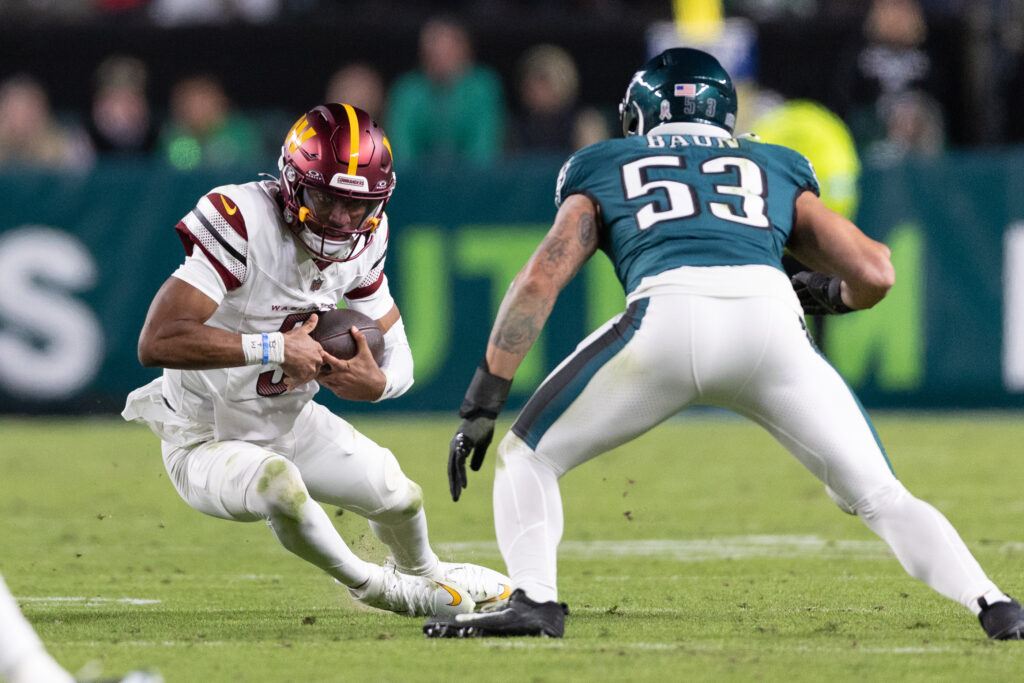
For the first nine weeks of the season, the Washington Commanders had one of the best offenses in the league, tied with the Baltimore Ravens in Expected Points Added per play. However, during the past two weeks, their offensive production has halted.
Despite scoring as many points as they did in Weeks 8 and 9, Washington's performance in Weeks 9 and 10 — two losses to the Pittsburgh Steelers and Philadelphia Eagles — has raised some concerns about the offense going forward.
Has Jayden Daniels hit a rookie wall? Did Kliff Kingsbury hit his midseason lull and run out of new ideas? Should the Commanders be worried going forward, or did Washington just run into two fairly good defenses?
Let’s try to answer some of those questions.
First, let’s quickly go into just how drastic the dropoff has been. During the first nine weeks of the season, the Commanders scored on a league-leading 60.7 percent of their drives. Now, that rate was always unsustainable.
They were the only team since 2000 to score on at least 60 percent of offensive drives through Week 9, per TruMedia. Only three other teams in that span reached 55 percent: the 2018 Saints (57.8 percent), the 2018 Chiefs (55.9 percent), and the 2007 Patriots (55.3 percent).
Because the Commanders were so good at scoring, it would not be surprising for that rate to come down during the second half of the season. But what became so shocking was not just that they were slowed down in Weeks 10 and 11; they were shut down.
Washington went from scoring on 60 percent of drives to under 35 percent during the past two weeks.

After going three-and-punt on just 14.3 percent of drives during the first nine weeks, Washington nearly punted in three plays as often as it scored during the past two weeks.
Is this a lack of creativity?
This is getting to the Kingsbury of it all. During his tenure in Arizona, Kingsbury was known for starting the season hot and fading as the season went on.
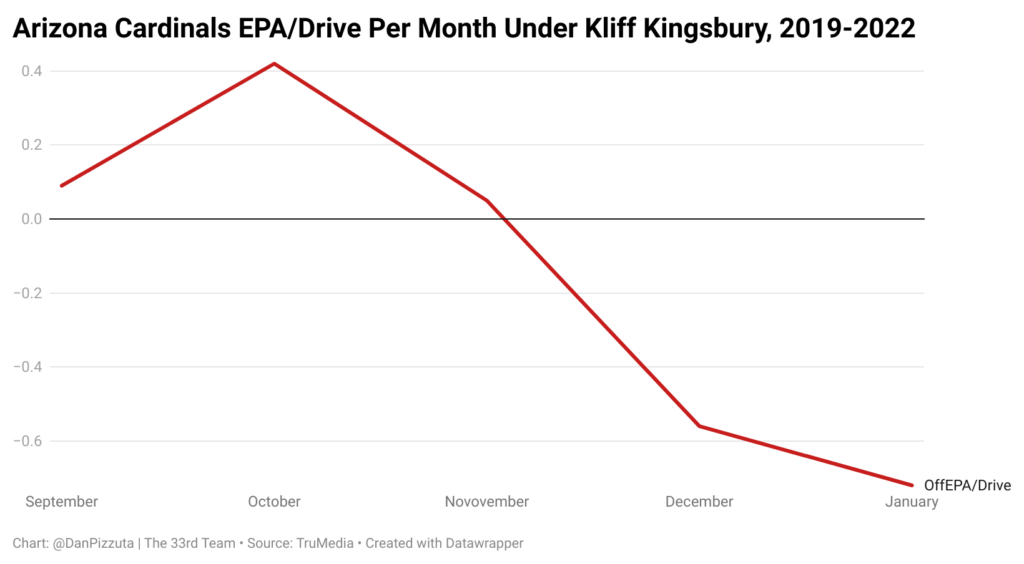
If we want to examine Kingsbury’s plan, we can look at the first few drives, when an offense typically has a script of plays to test out, and see how to adjust as the game goes on.
Against the Steelers, the Commanders went three-and-out on their opening two drives. Washington started with a three-and-out against Philadelphia but opened the second drive with a 34-yard pass to Austin Ekeler that got him in space off motion and play-action that helped set up a touchdown drive, giving the Commanders a 7-0 lead.
We’ve already seen this is a different Kingsbury than the one in Arizona, even compared to the highs of each team at the start of the season. The plays have been more diverse, as has the offensive game plan. It’s tough to jump straight to a lack of offensive creativity.
Room to Run
The run game has also been a big factor during the past two weeks. After averaging 163.9 rushing yards per game during the first nine weeks, Washington totaled 153 rushing yards combined in Weeks 10 and 11.
Against the Steelers, the Commanders were without Brian Robinson. Ekeler took the lead role but only had 44 yards on 13 carries. Per Next Gen Stats, Ekeler was expected to gain 53 yards on those carries, so he gained -0.7 yards over expectation per carry.
When Robinson returned for the Eagles game, he gained 63 yards on 16 carries but had 80 expected yards per Next Gen Stats, -1.1 yards over expected per carry.
Washington was stuffed on 24 percent of runs in the previous two games after just 15.9 percent through Week 9. Just two runs during the past two games gained more than 10 yards. That’s partly because of the blocking up front — Washington has averaged 0.72 yards before contact per carry during the past two weeks — but the backs also haven’t created as much after contact, averaging 2.34 yards after contact compared to 3.42 prior.
The biggest difference is the production (or lack thereof) from Jayden Daniels on the ground. Against Pittsburgh, Daniels ran three times for five yards. Against Philadelphia, that was seven times for 18 yards.
Daniels suffered a rib injury against the Carolina Panthers in Week 7. He did not practice the week before the Bears game in Week 8, and his rushing production has not been the same since.

When asked, Daniels downplayed the injury's impact on his performance, but it is difficult to ignore the difference in the numbers and how the quarterback looked as a runner.
This has played the biggest role on third downs, where Daniels has not used his legs to pick up easy yards for conversions.
During the past two weeks, Daniels has only scrambled on 5.3 percent of third downs and has been sacked on 11 percent of his third down dropbacks — while he’s averaging just 2.44 seconds to throw. Meanwhile, 81.3 percent of his third down attempts have come within 10 yards of the line of scrimmage, while that rate was 69.2 percent during the first nine weeks.
How the Commanders Have Been Played
This falls into how the past two defenses have played the Commanders. The Steelers and Eagles might be the two best units the Commanders have played this season.
Pittsburgh played a high rate of man coverage and left second-level defenders near the line of scrimmage in an effort to keep Daniels from getting out of the pocket. The Steelers also blitz on more than half of their snaps, attempting to speed up the process of the quarterback and send extra defenders into the run fit.
The Steelers played man on nearly 70 percent of plays, and with the pass rush making an impact, the Commanders did not have enough time to create openings in the passing game. While Washington has gotten the most out of its receiving corps, there aren’t many man-beaters in that rotation.
Still, there were opportunities even late in the game. This was Washington’s final third down of the game, a third-and-9 down 28-27 with 1:34 remaining. Noah Brown got behind James Pierre to the outside, but Daniels left the ball short, which forced Brown to come back for the ball, bringing the corner back into the play.
That’s the type of opening Daniels had feasted on early in the season but couldn’t come up with the throw in that spot. The next play was the controversial spot on an eight-yard catch by Zach Ertz on fourth-and-9.
While the stat going around after the Thursday night game against the Eagles was how often rookie cornerback Quinyon Mitchell lined up over Terry McLaurin, the Eagles barely played straight-up man coverage. Under Vic Fangio, the Eagles use a ton of match concepts in zone coverage, and the execution of covering those routes down the field was excellent.
As one might expect from a Fangio defense, the Eagles played nearly half of their snaps in two-high coverages, preventing deep passes from being attempted.
Daniels often took the check-down option and had just a 3.6-yard average depth of target. The Eagles rallied to the ball and did not allow explosive gains after the catch.
While the Steelers deliberately made an effort to keep Daniels in the pocket, the Eagles played with light boxes that had the linebackers lurking. Both Nakobe Dean and Zach Baun played out of their minds going downhill, defending the run and preventing pass plays from breaking through.
In both games, Daniels averaged under 2.5 seconds to throw in an effort to get the ball out quickly. His best trait early in the season was his ability to extend plays. That started with scrambles in the first few weeks and eventually opened up into out-of-structure throws down the field. Those weren’t available against the Steelers or Eagles. Part by the design of the defense but also partly by how Daniels managed the pocket.
When he tried to extend plays, there wasn’t much success:

Daniels's approach to extending plays was also different. Instead of using his mobility to open up shots down the field, he was hanging in the pocket and throwing short.
He also didn’t escape as often, leading to more sacks.
How much concern should there be?
For Washington, this might have been the unlucky scenario of playing the two best defenses at a time when the quarterback wasn’t at his best. Kingsbury suggested to reporters this week that he might have called plays differently because of Daniels’ health but wouldn’t give specifics.
The good news for the Commanders is that the quality of defenses drops off. Washington plays Dallas this week, a defense that is 29th in EPA per play and 32nd against the run. Then it has the Titans before a Week 14 bye.
After the bye, the Commanders get the Saints, Falcons, and Cowboys again. There’s another matchup with the Eagles in Week 16, which might be the only stiff defensive test remaining.
There are plenty of opportunities for get-right games for the Commanders. If the struggles continue, it should be an immediate red flag, but the most likely scenario is this offense going back to looking more like the early-season version given the opponents, and we won’t see a test until the Eagles rematch.
By then, Washington could be healthier and in a better spot against the division rival.


